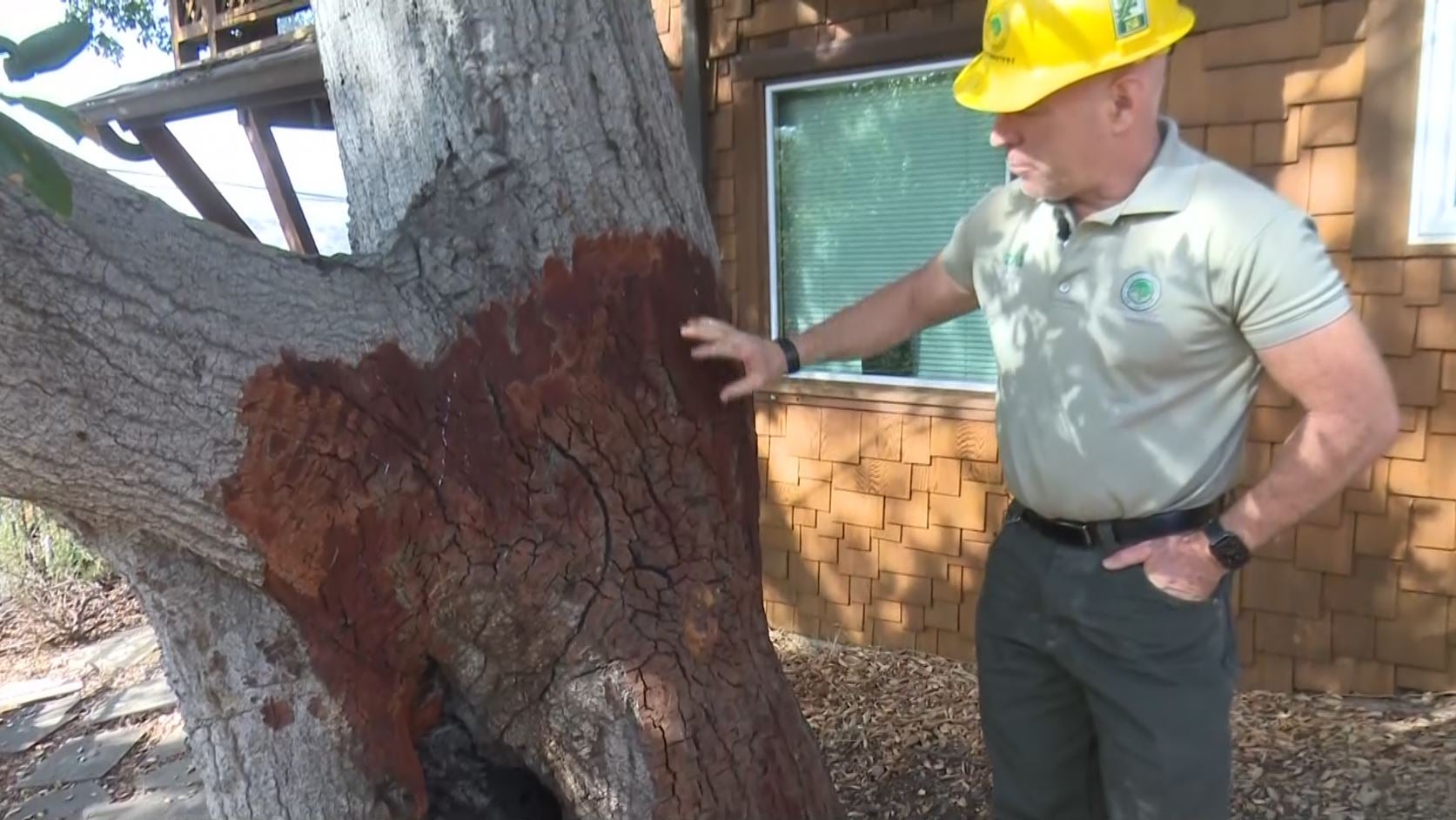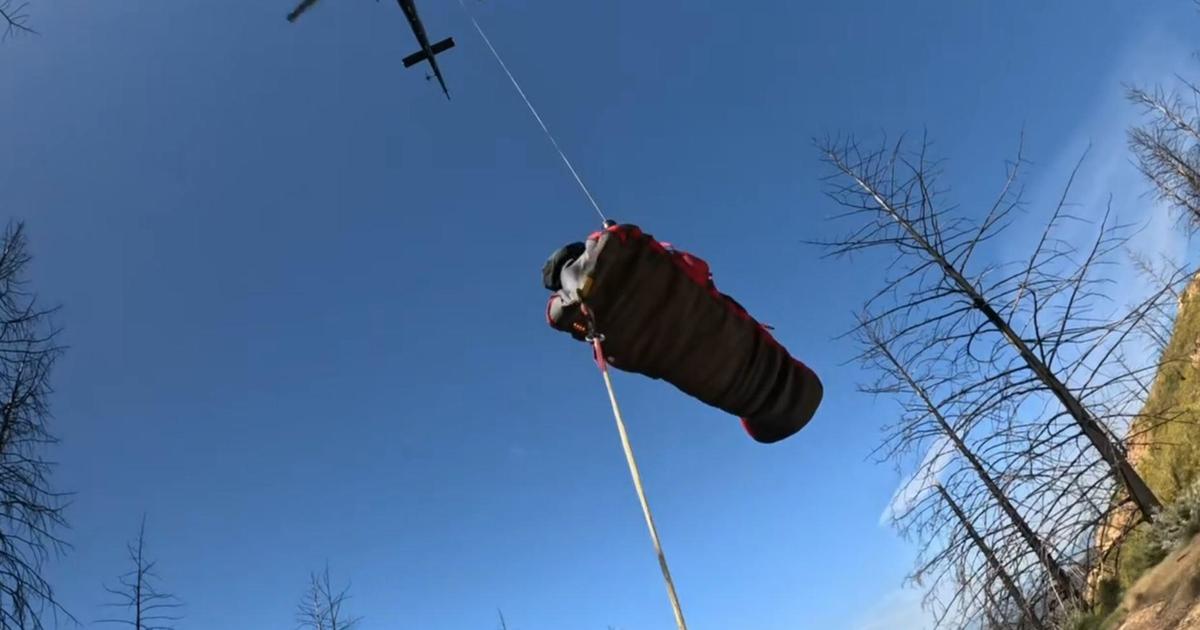Experts Warn Of Surge In Sudden Oak Death Infections In North Bay
MARIN COUNTY (KPIX 5) -- The rate at which trees in Marin County became infected with Sudden Oak Death in 2019 nearly tripled compared to the previous year, according to a University of California, Berkeley scientist.
The disease showed up in the mid-1990s and never went away. With the weather Northern California has experienced over the last couple of years, everyone is going to be seeing a lot more of it.
"These are signs of sudden oak death syndrome right here," explained Tad Jacobs, a certified arborist and founder of tree care company Treemasters. "This one's probably standing dead right now."
 Jacobs says doesn't need a study to know the disease is surging through Marin County. He's seeing quite a bit of the telltale symptoms.
Jacobs says doesn't need a study to know the disease is surging through Marin County. He's seeing quite a bit of the telltale symptoms.
"Uniquely, these trees can go from green to brown in just a day or two," said Jacobs. "Hence why they call it Sudden Oak Death syndrome."
"And then, of course, these limbs that have just fallen off," said Kerry Wininger of UC Cooperative Extension as he stood beneath a dying tree in Sonoma County's Fairfield Osborn Preserve. "And big patches will come out at once."
Wininger is with the UC team working to measure the problem, and the numbers are up dramatically. She oversees a yearly survey conducted by volunteer citizen scientists.
Sudden Oak Death is caused by a fungal pathogen, so it loves water. The heavy rains the region enjoyed coming out of the drought have caused infection rates increase dramatically in Marin County.
"For Sonoma County in general, Sudden Oak Death numbers look about double where they were last year," said Wininger. "So it's actually increasing at a rate a little bit faster than we would expect."
Researchers are fighting back with a campaign aimed at making the public more informed.
"So we try and get people to understand what they can do," said Wininger. "There's a lot of misinformation out there, so we don't want people wasting their resources. We want people to be able to target the best practices."
"Try and mimic a native environment in your yard," explained Jacobs. "If you have a lot of water-thirsty plants that create a lot of moisture in the soil, rhododendrons are foliar hosts for sudden oak death syndrome, along with other shrubs and trees."
The echo from the wet winters is here, and the disease is thriving.
"We had drought for several years and that really slowed down the problem," Jacobs says. "Now we're seeing a huge uptick, which is normal for the type of weather patterns we've been experiencing."
The UC Berkeley Forest Pathology and Mycology Lab is hosting several North Bay meetings on Sudden Oak Death that will provide the public with valuable information.



